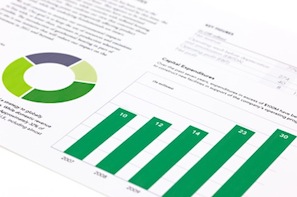In our last post we looked at the problems associated with a 'buy and hold' investment strategy. We concluded that a buy and hold approach could only work if you made your investment at the right time, but unfortunately most investors don’t buy at the optimum point. In this post we'll look at reading the market and timing your investments.
What is a buy and hold investment strategy and why is it broken
It's easy for some investors to believe that the best approach is a passive buy and hold investment strategy. The mantra goes ‘it’s time in the market, not market timing'. While buy and hold can be an effective strategy, if the investor starts at the right time and buys when the market is low, it is an approach that comes with flaws.
How to gauge the stock market's direction
Even if you have a real knack for picking the best fund, if you invest and are wrong about the trend of the market, your portfolio is going to suffer. This happened to thousands of uninformed investors in the great bear markets of 2000–2002 and 2007–2009. Many investors mistakenly think that it is all about choosing the best investments to park your money in.
Choosing the right investment fund to meet your goals
In our last post we discussed the 3 main types of investment fund. In this next post in our series on funds, we'll go on to look at a fund's aims and objectives.
Choosing between the 3 main types of investment funds
This is the third post in our series looking at investment funds. In our first post we covered the main benefits of investing in funds, while last time we discussed 6 steps to successful fund investing.
There are a wide range of funds available and the choice can sometimes be overwhelming so, in this post, we'll move onto looking at the main types of investments funds.
Tags: Investment funds, Investment strategy, Investment tutorials
In this series of posts we're looking at investment funds in more detail. Fund investing has been made easier by simplification. Funds take away a lot of the complexity involved in making investment decisions, which make them attractive for beginners and others who don't want to invest directly.
Last time we discussed the main benefits of fund investing and in this post we'll look at how to do it successfully.
Tags: Investment funds, Investment strategy, Investment tutorials
In this new series of posts I’m going to share with you all you need to know about funds. We’ll start with the most basic of questions: What is an investment fund?
Tags: Investment funds, Investment strategy, Investment tutorials
Two switches in our investment portfolio
As reported in our clients' Daily Market Updates, two switches were made in our investment portfolio during April.
Tags: Investment funds, Investment strategy, Investment news
How to reduce the cost of investing (part 2)
In our last post we looked at charges and their implications for your investment account. In particular, we divided the cost of investing into three categories and discussed the first one, namely fund charges.
Tags: Investment funds, Investment strategy, Investment charges
Charges and fees can seriously eat into your returns. When you fail to achieve adequate growth you run the risk of your wealth decreasing and if this happens during your retirement it can have disastrous consequences. To help increase the probability that this doesn’t happen to you, I’m now going to attempt to simplify charges and the cost of investing.
Tags: Investment funds, Investment strategy, Investment charges























